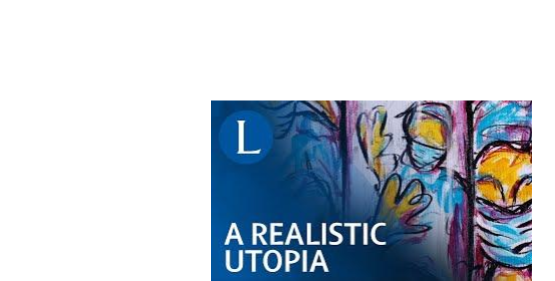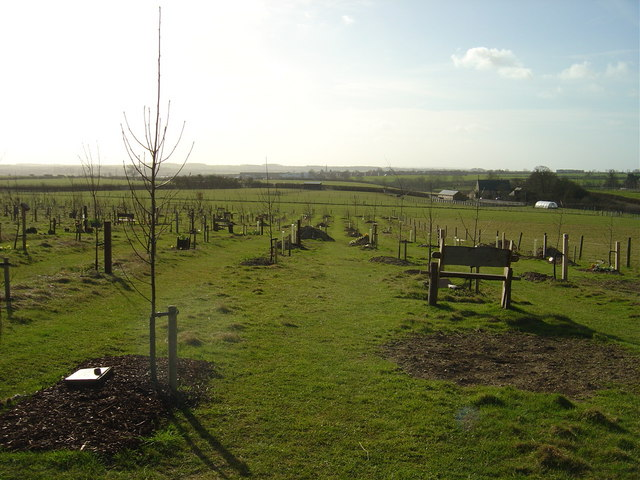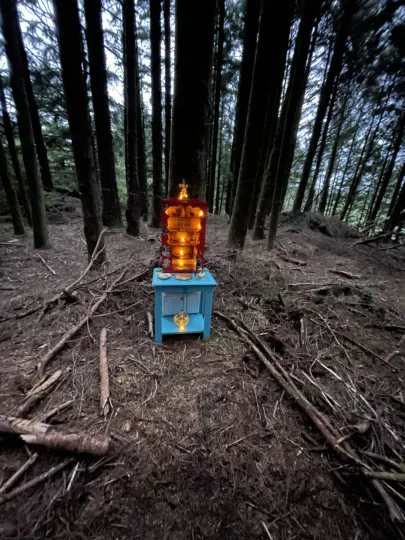13.5 Dying Well is Social Justice
Kimberly Puttman and Patricia Antoine

Figure 13.21. The 6:48-minute video, A Realistic Utopia, explores new options for dealing with death and dying. Do any of these options help you to think about what a good death would look like? Transcript
As we look at the complex issues related to death and dying, we see that the question of who dies when is complicated by privilege, oppression, and difference. At the same time, we are capable of taking interdependent action to increase social justice for people who are dying and their families. We already talked about the community actions of death cafes and conscious communities. We discussed changes in the laws related to the end of life and right to life. In this section, we learn about three additional ways that people are taking interdependent action: POLSTs and Advance Directives, Green Burials, and Last Words.
13.5.1 POLST and Advance Directives
|
POLST |
Advance Directive |
|
Medical Order to a doctor |
Legal document |
|
A health care professional completes the form |
An individual completes the form |
|
Is a specific Medical Order |
Contains general wishes about treatment |
|
A copy is in the patient’s medical record |
May not be in the patient’s medical record |
|
Was created in 1990 by Oregon Health and Sciences University |
Began in 1967, as part of a living will |
Figure 13.22. The chart describes the differences between a POLST and an Advance Care Directive. How might filling out either of these forms change the experience of death and dying for you or your loved ones?
The state of Oregon is once again an innovator. In the early 1990s, healthcare professionals and the state legislature created the POLST or Portable Orders for Life-Sustaining Treatment®. The POLST allows patients to describe what measures they want doctors to use to sustain their lives. These orders are really useful when patients are too sick to speak for themselves.
The POLST form is in addition to an advanced directive, a legal document that states a person’s wishes about receiving medical care if that person is no longer able to make medical decisions because of a serious illness or injury. An advance directive may also give a person (such as a spouse, relative, or friend) the authority to make medical decisions for another person when that person can no longer make decisions. Unlike an advance directive, the POLST focuses on what a doctor can or cannot do for the patient, including providing CPR or assistance with breathing.
The POLST process is now widely used in all US states, although state regulations vary (National POLST N.d.). To learn more about one family’s experience with POLST, the video POLST: When is the Right Time? [YouTube] is helpful.
13.5.2 Green Burial

13.23. This is an image of a green burial ground in the UK. How does it differ from a traditional cemetery?
In Chapter 8, we looked at some of the ways that environmentalists are acting to heal the earth. These efforts don’t stop with living people. They continue until after death. In the United States, until the 1930s, most people died at home. Their loved ones took care of their body. They were buried in home or city-owned cemeteries.
After this time, however, many states required trained morticians to report the deaths, embalm the bodies, and bury them in cemeteries with caskets. Often, these caskets were covered in cement, preventing the normal decay of the body.This style of burial adds toxic chemicals to the environment, risking the health of funeral workers. It also contributes toxins to the cemeteries.
As an alternative, eco-death activists agitate for green burials. A green burial (Figure 13.23) is a way of caring for the dead with minimal environmental impact (Green Burial Council. N.d.). This aids in the conservation of natural resources, reduction of carbon emissions, protection of worker health, and the restoration and or preservation of habitat. If a body is buried without these chemicals in a wooden box, the decomposing body can eventually nurture plants. If you would like to learn more about green burials, watch Die as You Lived: What is Green Burial? [YouTube]. How is this style of burial consistent with environmental values?
13.5.3 Last Words Project: Art as Activism


Figure 13.24 a and b. A The Magenta Horse is one of the mailboxes that Crystal created to receive letters to loved ones. It was located in Siletz Bay on the south end of Lincoln City, Oregon. B The second mailbox is called the “Golden Chachkie” because it is filled with trinkets. “It kind of reminded me of my grandma,” Crystal says. “She loved antiques. (Tobias 2021)
In addition to implementing new laws and policies related to end of life, and new options for funerals and burials, one woman is creating new alternatives for expressing grief. Crystal Akins is an arts activist, musician, spiritual director, and death doula. In the Last Words Project, she united people with words and music to create support for the dying and celebrate the dead. A news article says this about the project:
Crystal says throughout her years of death work, she has seen inequities in how we care for our dying, adding, “I also see the isolation around grief, loss, and dying. I’ve noticed when I see my folks grieving, that we all grieve differently according to what has happened and our own unique personalities.”
So, Meneses took to the drawing board and came up with this music series stating, “Let’s use art and music to create access to these places that we don’t usually want to visit.” (Meneses quoted by Thomas 2021)
In this project, she set up mailboxes in Lincoln City, Oregon, so that people could write letters to their loved ones. People could write to whoever they wanted, including people, pets, and trees. Then, Crystal wrote songs that expressed the feelings and themes of the letters, allowing the wisdom about life, death, loss, and grief to shine from people’s words. You might enjoy the song, Body, for its joy in living. She recorded this music with a group of singers and musicians. As a final step, she held a series of concerts in graveyards around Portland, Oregon. These concerts raised money to care for people who would otherwise die alone.
In addition, this project brought urban and rural people together. Locals and visitors to the Oregon coast could share their words. Urban Portlanders and anyone on YouTube could enjoy the music. In this way, Crystal and her singers and musicians were creating community resilience (Kirkendall 2021; Tobias 2021; Thomas 2021).
In these interdependent actions—changing laws and policies, providing new ways to deal with bodies, and using art and song to create change—we expand the possibilities for social justice for people who are dying, their families, the dead, and our ancestors. How will you take action?
13.5.4 Licenses and Attributions for Dying Well is Social Justice
Open Content, Original
“Dying Well is Social Justice” by Kimberly Puttman and Patricia Antoine is licensed under CC BY 4.0.
Figure 13.21. “Chart of Differences between POLST and Advanced Directive” by Kimberly Puttman is licensed under CC BY 4.0.
Open Content, Shared Previously
13.22. “Green Burial Ground” by sian harrison is licensed under CC BY-SA 2.0.
All Rights Reserved Content
Figure 13.21. “A New Vision for Death and Dying” by The Lancet is licensed under the Standard YouTube License.
Figure 13.23a. “The Magenta Horse” by Crystal Akins is all rights reserved and included with permission.
Figure 13.23b. “Golden Chachkie” by Crystal Akins is all rights reserved and included with permission.
